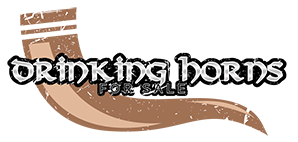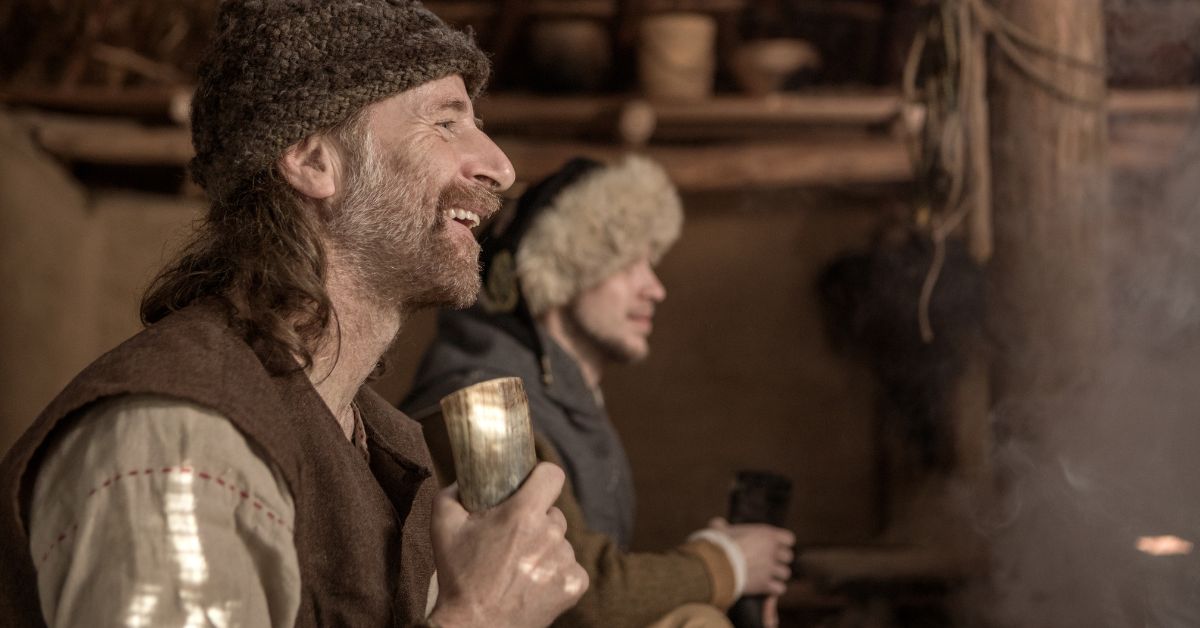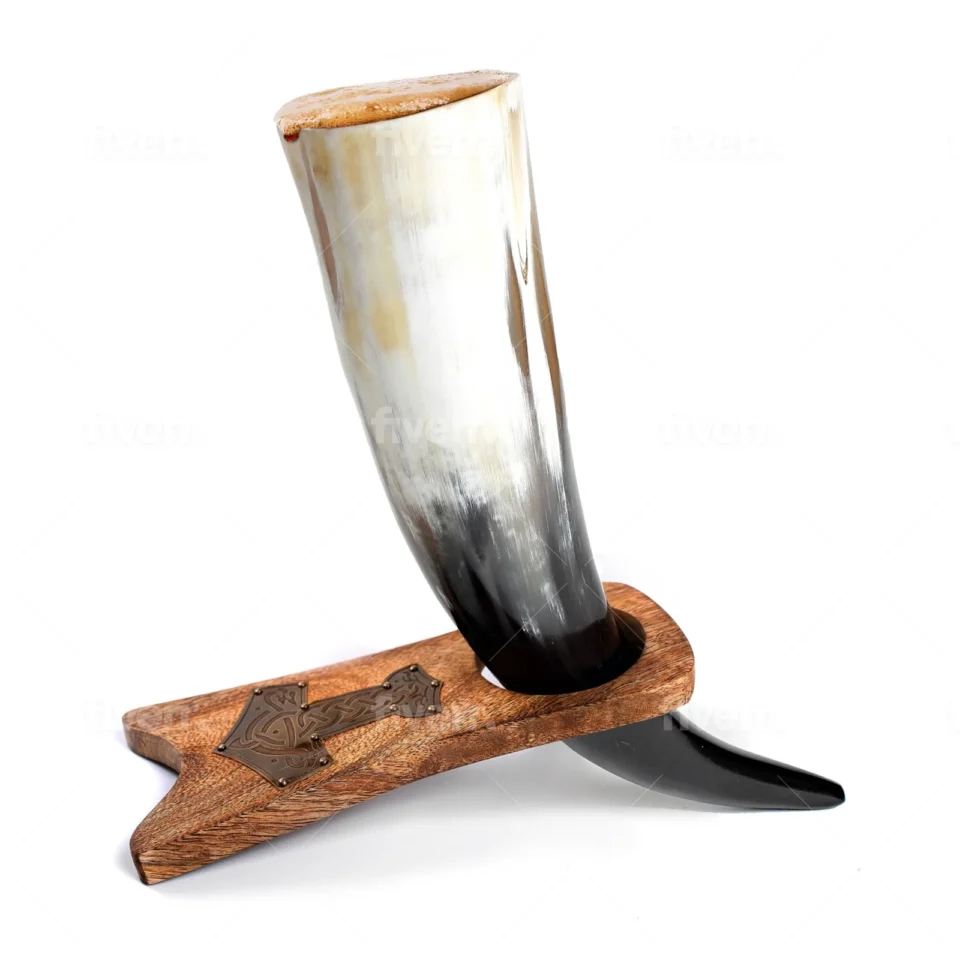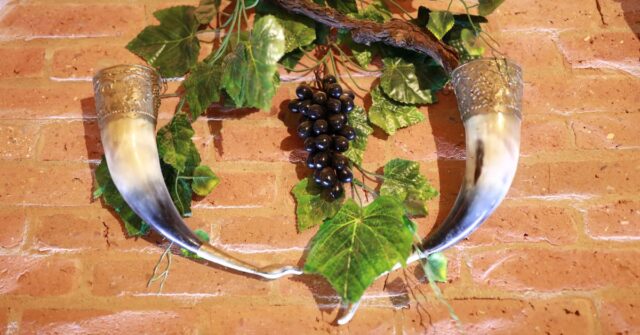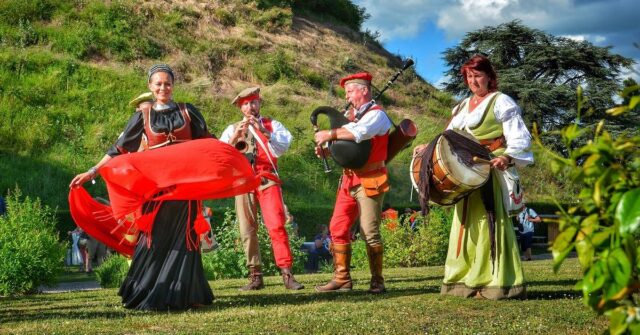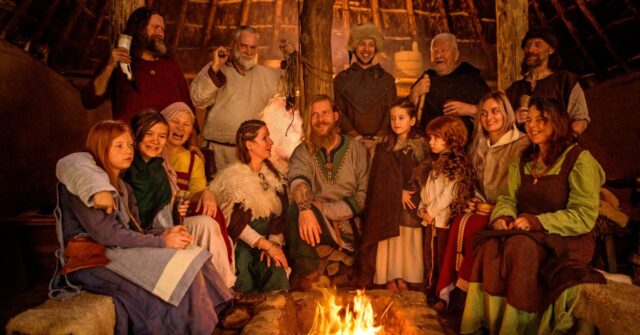Welcome to the fascinating world of drinking horns!
This guide is tailored for those intrigued by the rich history and tradition of drinking horns, widely used during medieval times and cherished by many cultures across the globe.
Introduction to Drinking Horns
Let’s embark on a journey into the origins and importance of drinking horns, exploring their evolution from ancient utility to modern ceremonial use.
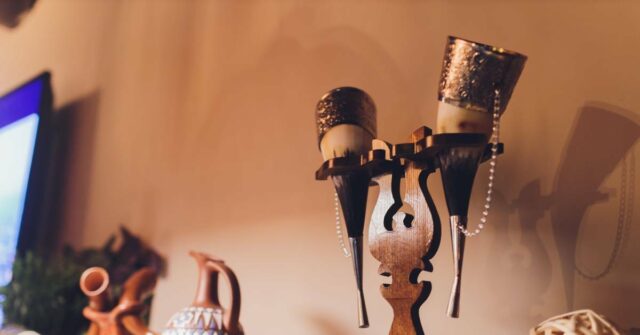

History and Cultural Significance of Drinking Horns
Drinking horns date back to the ancient Scandinavians and Celts, symbolizing power and communal trust.
These iconic vessels were often used during significant ceremonies and tribal councils. Their use spread throughout Europe and has been a staple in many historical reenactments and cultural celebrations.
Types of Drinking Horns
There are several styles of drinking horns, each serving different purposes.
The most common include the flat-bottomed stand horn for tabletop use, the looped pastoral horn for carrying, and the decorative ceremonial horn, often adorned with intricate carvings and metalwork.
Preparing Your Drinking Horn for Use
Proper preparation of your drinking horn is crucial for optimal use and longevity. Here’s how to ensure it’s ready for any occasion.
Cleaning and Maintenance
Before your first use, clean your drinking horn with warm water and a mild soap.
Regular maintenance involves drying the horn completely after washing and occasionally rubbing it with natural oil to prevent cracking.
Seasoning Your New Horn
To remove the natural odor and taste, fill the horn with a mixture of warm water and baking soda and let it sit overnight. Rinse thoroughly the next day before use.
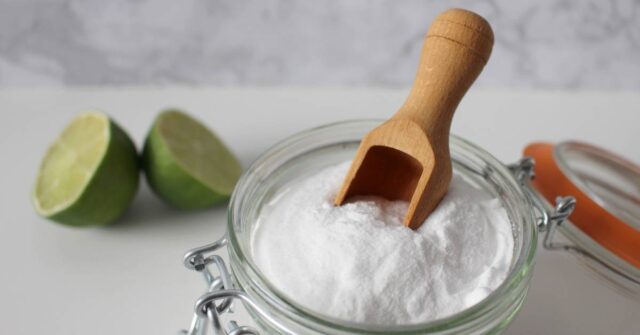

Basic Drinking Horn Etiquette
Understanding the basics of drinking horn etiquette will enhance your experience and ensure you handle the horn correctly.
How to Properly Fill a Drinking Horn
Fill your horn only to a manageable level to avoid spills. Traditionally, horns were not set down until they were empty, so it’s wise to consider your intake before pouring.
The Correct Way to Hold a Drinking Horn
Grip the horn towards its base for stability, keeping your fingers away from the rim to preserve the beverage’s flavor and temperature.
Drinking Horn Etiquette at Social Events
Social gatherings with drinking horns call for a special set of manners to ensure the event remains dignified and enjoyable for all guests.
Toast and Speech Etiquette
During toasts, it’s respectful to make eye contact with your fellow participants before, during, and after drinking. Offer a short, heartfelt toast to the host or the occasion before the first sip.
Sharing and Passing the Horn
When passing the horn, do so with the open end facing the recipient, allowing them to grasp it easily. It’s a gesture of trust and respect.


Advanced Tips for Drinking Horn Use
For the seasoned drinking horn user, these advanced tips will help you refine your practice and impress fellow enthusiasts.
Pairing Drinks with Different Types of Horns
Lighter ales and meads are best served in smaller, lighter horns, while stouts and heavier drinks can be enjoyed from a robust, large-capacity horn.
Decorative Uses of Drinking Horns
Beyond their drinking function, horns can serve as striking decorative pieces. Display them in a prominent place to spark conversations and interest.
Common Mistakes to Avoid with Drinking Horns
Avoiding common pitfalls can greatly extend the life of your drinking horn and enhance your drinking experience.
Missteps in Maintenance
Avoid using hot water for cleaning as it can warp the horn. Never place a drinking horn in a dishwasher.
Social Faux Pas
In social settings, do not monopolize the horn; share it generously. Also, avoid loud slurping noises which can be seen as impolite.
Conclusion
As we conclude our guide, let’s reflect on the meaningful connection between past and present that drinking horns represent, and how embracing these traditions can enrich our experiences.


Embracing the Tradition and Culture
Drinking from a horn links us to a storied past and enriches our social rituals. Respect the traditions and enjoy the communal bond it fosters.
Further Resources and Communities
For those eager to delve deeper, consider joining historical reenactment groups or visiting museums dedicated to medieval history.
Online forums and local clubs can also provide valuable insights and connections.
